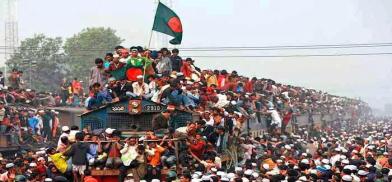In a first for Bangladesh, women outnumber men; literacy rate jumps
Significantly, the literacy rate jumped to 74.66 per cent— 81.28 per cent in the urban areas and 71.56 per cent in the rural areas—against 51.77 per cent recorded in the 2011 census

Women in Bangladesh for the first time have outnumbered men in a recent census released by the government as the country’s overall population grows to 165 million against 144 million recorded in the 2011 census. The latest figures show about 83.35 million women live in the country, compared to 81.71 million men.
On Wednesday, the findings released by the Bangladesh Bureau of Statistics (BBS) under the Population and Housing Census 2022 Project showed that country added 21 million people in the last ten years.
Barring Muslim, which is the majority religion in the country, the population of people belonging to all other faiths decreased significantly. Hindus’ population decreased by almost 8 per cent. In 2011, their population decreased by 8.54 per cent. Buddhist population decreased to 0.61 per cent in 2022, from 0.62 per cent in 2021.
This comes amid growing attacks on religious minorities, especially Hindus, in the last few years. Last year, Hindu homes and their places of worship came under attack in several districts in the country. However, the Hasina government later managed to contain the situation quickly.
Although the rural population increased by 3 million and the urban by 20 million, the sixth census showed the majority of people still live in the rural parts of the country.
Around 44 million, or around 25 per cent of the total population, live in the Dhaka division.
Significantly, the literacy rate jumped to 74.66 per cent— 81.28 per cent in the urban areas and 71.56 per cent in the rural areas—against 51.77 per cent recorded in the 2011 census. However, literacy is still higher among men, around 76 per cent, in comparison to women, 72.82 per cent.
55.89 per cent of mobile users are using mobile phones for more than 5 years. Additionally, the number of internet users is 30.68% of the total population.
The country’s population in 1974, the year when it conducted the first census after its independence in 1971, was around 71 million. In 1981, it grew to 87 million and 106 million by 1991. In 2001, it reached 124 million.
(SAM)









Post a Comment